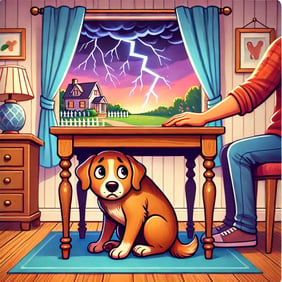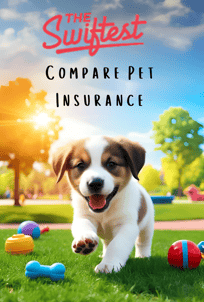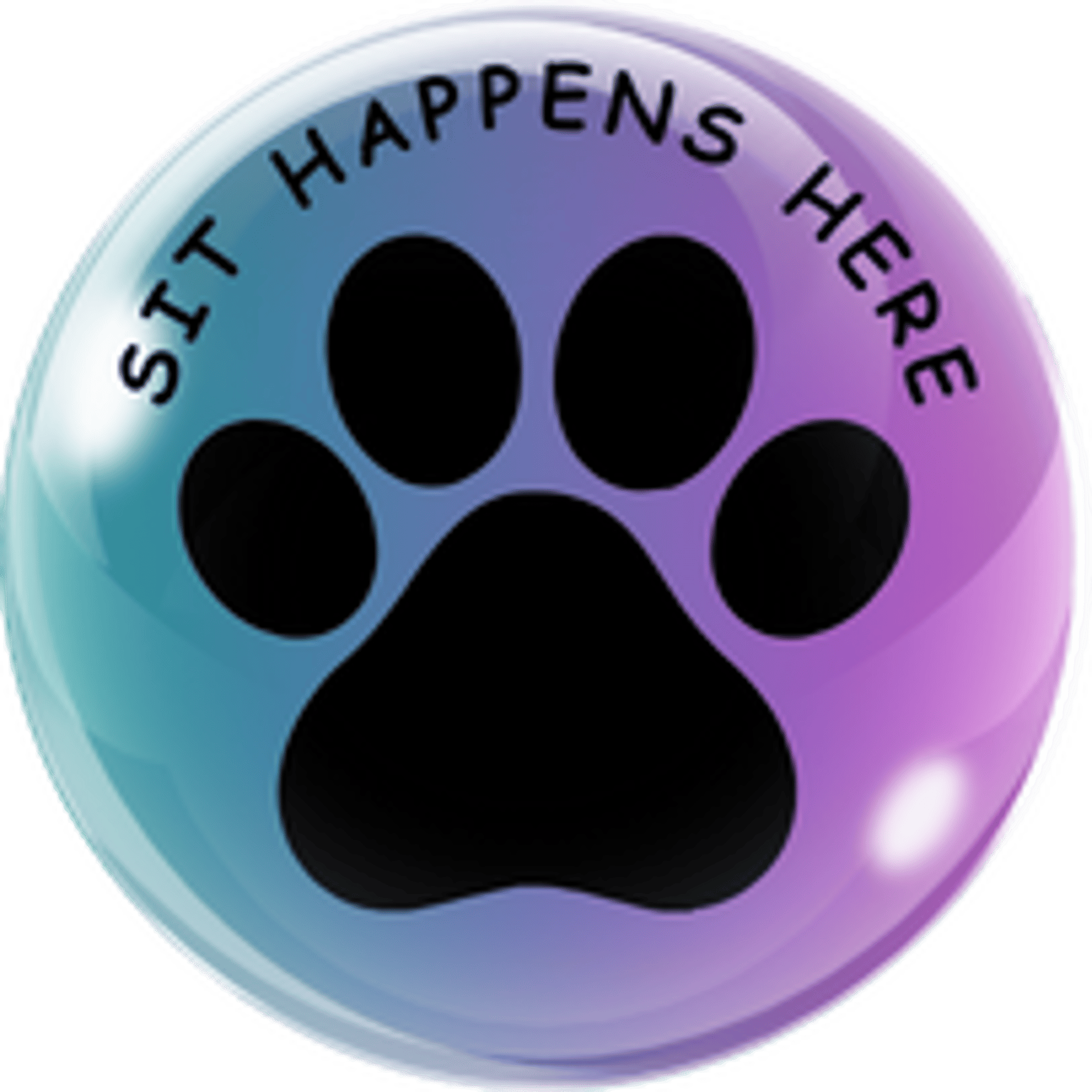I believe in educating dog owners about their breed, unlocking new levels of understanding, and taking that exciting next step together!
Understanding Canine Anxiety: 10 Common Fears and How to Address Them
Dogs, much like humans, can experience fear and develop phobias. These emotional responses can be triggered by a variety of stimuli, ranging from loud noises to unfamiliar environments. While it's natural for dogs to be cautious or wary in certain situations, excessive fear or phobic reactions can significantly impact their quality of life and the bond they share with their owners. In this blog post, we'll explore common fears and phobias in dogs, provide examples, and discuss effective strategies to help your furry friend overcome these challenges.
TRAINING TIPS
Tiffany Sandquist
4 min read


Understanding and Overcoming Fear and Phobias in Dogs
Common Fears and Phobias in Dogs
1. Thunderstorms
Many dogs are terrified of thunderstorms. The loud booms, bright flashes of lightning, and changes in atmospheric pressure can be overwhelming.
Symptoms:
- Trembling or shaking
- Pacing or restlessness
- Hiding in small, enclosed spaces
- Excessive drooling
- Destructive behavior
How to Help:
- Create a Safe Space: Designate a quiet, comfortable area where your dog can retreat during a storm. This could be a crate covered with a blanket or a cozy corner with their favorite bed.
- Desensitization: Gradually expose your dog to recorded thunder sounds at a low volume, gradually increasing the volume over time while rewarding calm behavior.
- Calming Products: Consider using calming products like anxiety wraps (e.g., Thundershirt), pheromone diffusers (e.g., Adaptil), or natural supplements (consult your vet first).
2. Fireworks
Fireworks are another common fear trigger due to their sudden, loud noises and bright lights.
Symptoms:
- Panic and attempts to escape
- Excessive barking or howling
- Pacing and inability to settle
- House soiling
How to Help:
- Pre-Exposure Training: Similar to thunderstorm desensitization, play recorded firework sounds at a low volume and gradually increase it while rewarding calm behavior.
- Distraction: Engage your dog in a favorite activity or game during fireworks to divert their attention.
- Safe Environment: Keep your dog indoors during fireworks displays, close curtains to block out flashes, and play soothing music or white noise to mask the sounds.
3. Veterinary Visits
Many dogs associate the vet's office with unpleasant experiences, leading to fear and anxiety.
Symptoms:
- Trembling or cowering
- Aggressive behavior (growling, snapping)
- Refusal to enter the clinic
- Excessive panting or drooling
How to Help:
- Positive Associations: Visit the vet for short, positive interactions (e.g., getting treats or praise) without any procedures.
- Calming Techniques: Practice calming techniques like deep pressure therapy or use calming products before the visit.
- Communication: Inform your vet about your dog's fear so they can take a gentle, patient approach.
4. Vacuum Cleaners and Household Appliances
The noise and movement of vacuum cleaners and other appliances can be frightening for some dogs.
Symptoms:
- Barking or growling at the appliance
- Hiding or running away
- Attempting to attack the appliance
How to Help:
- Desensitization: Allow your dog to observe the appliance while it's turned off, then gradually introduce it at a low setting while rewarding calm behavior.
- Positive Reinforcement: Give your dog treats and praise when they remain calm around the appliance.
- Gradual Exposure: Start by using the appliance in a different room and gradually bring it closer to your dog over time.
5. Strangers and New People
Some dogs are fearful of strangers, which can lead to shyness or aggressive behavior.
Symptoms:
- Hiding behind the owner
- Growling or barking at strangers
- Submissive behavior (e.g., rolling over, tucking tail)
How to Help:
- Controlled Introductions: Introduce your dog to new people in a controlled environment. Ask the person to ignore the dog initially and let the dog approach at their own pace.
- Positive Reinforcement: Reward your dog with treats and praise for calm, confident behavior around strangers.
- Socialization: Gradually expose your dog to a variety of people in different settings to build their confidence.
6. Car Rides
Car rides can be stressful for dogs, especially if they associate them with negative experiences like going to the vet.
Symptoms:
- Panting and drooling excessively
- Whining or barking
- Restlessness or attempts to escape
- Motion sickness (vomiting)
How to Help:
- Short Trips: Start with short, positive car rides (e.g., to a park) to build positive associations.
- Comfortable Space: Ensure your dog has a comfortable, secure space in the car, such as a crate or a dog seatbelt.
- Calming Techniques: Use calming products or techniques to reduce anxiety during car rides.
7. Loud Noises (e.g., Construction, Sirens)
Loud, unexpected noises can startle and frighten dogs.
Symptoms:
- Startling easily
- Hiding or seeking comfort
- Excessive barking
How to Help:
- Noise Desensitization: Gradually expose your dog to recorded versions of the noises at a low volume, increasing it over time while rewarding calm behavior.
- Safe Space: Provide a safe, quiet space where your dog can retreat when they hear loud noises.
- Distraction: Engage your dog in a favorite activity or game to distract them from the noise.
8. Unfamiliar Environments
New places can be overwhelming for some dogs, leading to fear and anxiety.
Symptoms:
- Reluctance to explore
- Clinging to the owner
- Excessive panting or drooling
How to Help:
- Gradual Exposure: Introduce your dog to new environments gradually, starting with less overwhelming places and slowly increasing the complexity.
- Positive Reinforcement: Reward your dog with treats and praise for exploring and showing confidence in new environments.
- Familiar Items: Bring familiar items like their favorite toy or blanket to provide comfort.
9. Other Animals
Some dogs may be fearful of other animals, whether it's other dogs, cats, or wildlife.
Symptoms:
- Aggressive behavior (growling, snapping)
- Hiding or attempting to escape
- Submissive behavior (e.g., rolling over, tucking tail)
How to Help:
- Controlled Introductions: Introduce your dog to other animals in a controlled, neutral environment. Keep interactions short and positive.
- Positive Reinforcement: Reward your dog for calm, confident behavior around other animals.
- Socialization: Gradually expose your dog to a variety of animals in different settings to build their confidence.
10. Separation Anxiety
While not a specific phobia, separation anxiety involves fear of being left alone, leading to distress and problematic behaviors.
Symptoms:
- Excessive barking or howling
- Destructive behavior (e.g., chewing furniture)
- House soiling
- Attempts to escape
How to Help:
- Gradual Desensitization: Practice leaving your dog alone for short periods, gradually increasing the duration while rewarding calm behavior.
- Routine: Establish a consistent routine to help your dog feel more secure.
- Environmental Enrichment: Provide toys, puzzles, and other forms of mental stimulation to keep your dog occupied while you're away.
Conclusion
Fear and phobias in dogs can be challenging to manage, but with patience, understanding, and the right strategies, you can help your furry friend overcome these issues. Remember that each dog is unique, and what works for one may not work for another. If your dog's fear or phobia is severe or persistent, consider seeking professional help from a veterinarian or a certified animal behaviorist. With time and effort, you can help your dog feel more secure and confident, leading to a happier and healthier life for both of you.
Check out our product page! Your support helps us keep creating great content for you!





Sit Happens Here
Transforming lives through dog training excellence.
Contact Us
971-218-9622
© 2024. All rights reserved.
